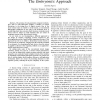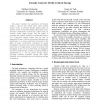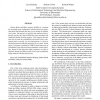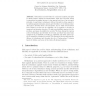1048 search results - page 76 / 210 » Reliability Modeling of Fault Tolerant Control Systems |
CAMP
2005
IEEE
14 years 1 months ago
2005
IEEE
Abstract— The promise of next-generation computer technologies, such as nano-electronics, implies a number of serious alterations to the design flow of digital circuits. One of ...
MSS
2007
IEEE
14 years 2 months ago
2007
IEEE
This paper examines the application of Tornado Codes, a class of low density parity check (LDPC) erasure codes, to archival storage systems based on massive arrays of idle disks (...
QEST
2007
IEEE
14 years 2 months ago
2007
IEEE
Failure Mode and Effect Analysis (FMEA) is a method for assessing cause-consequence relations between component faults and hazards that may occur during the lifetime of a system. ...
SEDE
2007
13 years 9 months ago
2007
— Achieving reliability in fault tolerant systems requires both avoidance and redundancy. This study focuses on avoidance as it pertains to the design of microchips. The lifecycl...
ESORICS
2004
Springer
14 years 1 months ago
2004
Springer
Redundancy and diversity are commonly applied principles for fault tolerance against accidental faults. Their use in security, which is attracting increasing interest, is less gene...




